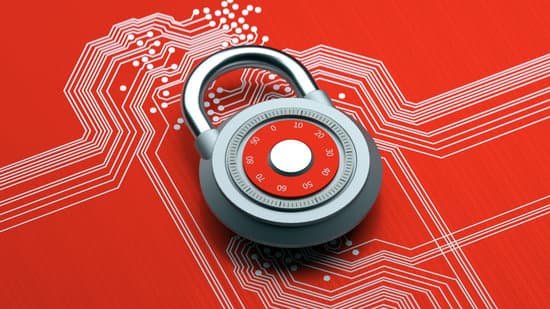Author: Claire Lish (ABP Company Secretary/Governance Lead) Be honest. When was the last time you and your colleagues completely lost it in one of those contagious “belly laugh” moments where even when a quiet pause of composure arrives, someone else in the group sets it…

Since March 2020, the majority of the UK population has had to work from home at some point due to the COVID pandemic. These enforced periods of home working have made it more difficult for individuals to have clear ‘boundaries’ between work and home and as such, there is less of a sense of a healthy ‘work-life balance’. Moving one’s work environment into the home may be completely novel to some whilst others may be more used to spending some time working at home. Moreover, not only does the dynamic of staying at home add one dimension to the sense of occupational strain, so does the need to engage with and learn to use and communicate with new technologies. Having that working environment in the home might see workers trying to juggle a constant stream of alerts amongst their domestic non-work activities. Digital alerts can soon take over days and evenings and workers often feel obliged to attend to them regardless of when they appear, and especially if they are extending to mobile phones and tablet devices not normally used for work. In this article we talk about the psychological impacts of digital intrusion and how they might be managed.
Working from home has traditionally been seen as a perk of a job, of avoiding the commute, overly busy, chaotic and loud work environments, and being able to focus more to complete projects or tasks. But these benefits of home working are coupled with potential pitfalls in digital intrusions from work. There are three main ways in which digital intrusion impacts on the home worker: attention, phone applications and intrusion of privacy.
Attention
Regardless of whether working on a laptop or PC, digital intrusion prevails through visual and auditory notifications that drag attention from a current task. These alerts often synchronously also appear on PCs and mobile phones, and interrupt thought and attention processes. This is often particularly evident in video meetings when a person’s attention briefly diverts (e.g. to an incoming email or auditory alert) and their thread of concentration is lost.
Phone Applications
Digital intrusion also happens through applications on personal mobile phones. This shrinks the out of office time that workers experience by having phone alerts draw them back to work mode. Phone alerts can be particularly intrusive as most people carry their phone with them at all times and even have it besides their bed during the night. Rarely do workers turn off the auditory alerts, or even turn them down, which would offer a significant reduction in their intrusion both during and outside of work hours. One reason this might happen is their fear of missing out on an important alert, possibly one that requires an immediate action. The juxtaposition here for a worker is to ignore the alert. This in itself could evoke a feeling of stress and anxiety. They may not be able to concentrate on the task in hand as their attention persistently drifts to the unanswered alert. This level of phone intrusion, especially outside of work times, suggests that most enforced home workers are living with blurred work-personal life boundaries: Prior to COVID, there was an increasing trend for workers to add work communications to their private mobile devices, often through apps such as WhatsApp. During enforced homeworking this has become less optional and more of a perceived need. Of interest is that it is unlikely that an employer has imposed that need. Rather more likely is that employees believe that their co-workers are using their mobile phones in this way and that they therefore should too. Such implicit (and often unfounded) assumptions rapidly create behavioural norms that employees then feel the need to adhere to.
Intrusion of Privacy
The final way in which digital intrusion impacts home life is an invasion of privacy. Prior to COVID, working at home might have included the odd video meeting. Through enforced COVID homeworking, people have had to become au fait with video meetings. This might not sit well with many workers who, under normal circumstances, would never have colleagues visit them at home. They would have had a very clear work – personal life divide, but now video calls make it seem as if those people are in their homes. Whilst the application of digitised backgrounds during such meetings may hide the visibility of one’s home, the homeworker may feel that the other meeting delegates are in their homes. This can also evoke an array of psychological factors, including social comparison and feeling judged by others. Indeed, we need not look further than advertising to see commercials already utilising video meetings to evoke social judgement with the aim of evoking the need to update one’s home environment!
Intrusion Impact
Of course, not everyone will experience persistent alerts differently. Some might find it enormously irritating, whilst others might barely notice the alerts. It might be suggested that some people are better able to remember what they were doing when interrupted and might therefore be better able to switch between an ongoing task and responding to an alert (e.g., Russell et al., 2017; Trafton et al., 2003; Wickens et al., 2015). They are thus better able to multi-task and cognitively jump between tasks. Being able to engage in this type of dual processing and task switching affords workers a sense of being in control, and if someone feels in control of their work load or, in this instance, intrusions to progressing with that work load, they might be less likely to become anxious or stressed by repetitive intrusions. Other factors of dual processing that determine whether a person is more or less likely to be distracted by phone or PC alerts include whether they are bored or engrossed in their work activity, tired or even the level of difficulty associated with a work task. Research has shown that the more familiar people are with tasks, the easier it is to manage and respond to digital intrusions, a notion explored more by Uther et al. (2021). If finding a task more difficult, however, more cognitive processing capacity needs to be given over to that task, leaving less attentional capacity to deal with, and possibly ignore, intrusions.
There is also an increasing body of evidence that suggests that our brains show hypervigilance to digital notifications (e.g., Uther et al., 2018; Roye et al., 2013; Uther et al., 2006). Moreover, it appears that this hypervigilance may underpin ongoing work strain. For example, Jones et al., (2019) and Uther et al., (2018) showed that work-related messaging alerts are possibly eliciting a hypervigilant response in individuals and this in turn appears to correlate with job involvement. Hence, it is likely that these digital distractions may be fuelling chronic physiological stress, which, if unchecked, is not good for worker wellbeing and productivity.
Coping With Digital Intrusion
How each person deals with, and copes with any level of digital intrusion when working from home will vary immensely from person to person. Creating a work-home life balance may become more difficult if these intrusions are not eliminated and boundaries may remain blurred. In order to reduce impact on psychological wellbeing, workers need to be able to hold a number of tasks in working memory concurrently. They need to be adept at task switching and if not, they need to reduce the levels of intrusion by switching off alerts, especially outside of the working day. This also requires some level of implicit contracting amongst workers that there is no expectation to respond to alerts outside of work hours. Simply knowing that this expectation does not exist, and that there is no judgement from superiors or co-workers if out of hours alerts go unanswered until the next working day, can afford workers peace of mind and less of a necessity to respond to every alert.
In terms of the intrusion of privacy, creating a separate workspace in a quiet part of the home can be conducive to creating the work-private life separation, and feel less as if other workers are coming into one’s home. This is however not always physically feasible. In these instances, using a blurred background or live meeting wallpaper can be conducive to privatising one’s surroundings during a work meeting. To this end, there is an increasing trend for workers to take a physical snapshot of their actual work environment and use this as a background when conducting virtual meetings from home. For those looking for more information, there are lots of helpful blogs, vlogs, and scientific assessments of how to reduce digital intrusion. We particularly recommend Dr Kristy Goodwin’s (2021) recent podcast and overview in which she discusses how our primitive brains which evolved to actively seek out information are struggling to cope with the constant influx of content that is thrust upon us in this digital overload era. Goodwin makes a very good case for working within our neurobiological constraints and offers further advice on how to do so.
All of this said, it may be the case that companies need to begin to look towards establishing guidelines for their employees to maintain their mental health when working from home that obviates social comparison and a perceived need to adhere to perceived unfounded norms of behaviour.
By: Dr Alison Attrill-Smith & Professor Maria Uther
Cyberpsychology Research Group at the University of Wolverhampton
References
Goodwin, K. (2021). Stop Digital Burnout. https://programs.drkristygoodwin.com/webinar_replay_sdb/. 21st April 2021.
Goodwin, K. (2021). Stop Digital Burnout. https://drkristygoodwin.com/wp-content/uploads/2021/04/Stop-Digital-Burnout_Summary.pdf. Retrieved 29th April 2021.
Jones, R., Cleveland, M., & Uther, M. (2019). State and trait neural correlates of the balance between work and nonwork roles. Psychiatry Research: Neuroimaging, 287, 19-30.
Roye, A., Jacobsen, T., & Schröger, E. (2013). Discrimination of personally significant from nonsignificant sounds: A training study. Cognitive, Affective, & Behavioral Neuroscience, 13(4), 930-943.
Russell, E., Woods, S. A., & Banks, A. P. (2017). Examining conscientiousness as a key resource in resisting email interruptions: Implications for volatile resources and goal achievement. Journal of Occupational and Organizational Psychology, 90(3), 407-435.
Trafton, J. G., Altmann, E. M., Brock, D. P., & Mintz, F. E. (2003). Preparing to resume an interrupted task: Effects of prospective goal encoding and retrospective rehearsal. International Journal of Human-Computer Studies, 58(5), 583-603.
Uther, M., Kujala, A., Huotilainen, M., Shtyrov, Y., & Näätänen, R. (2006). Training in morse code enhances involuntary attentional switching to acoustic frequency: Evidence from ERPs. Brain Research, 1073, 417-424.
Uther, M., Cleveland, M., & Jones, R. (2018). Email overload? brain and behavioral responses to common messaging alerts are heightened for email alerts and are associated with job involvement. Frontiers in Psychology, 9, 1206.
Uther M., Cleveland M., Jones R. (2020) Digital Distractions: The Effect and Use of Digital Message Alerts and Their Relationship with Work-Life Balance. In: Grant C., Russell E. (eds) Agile Working and Well-Being in the Digital Age. Palgrave Macmillan, Cham. https://doi.org/10.1007/978-3-030-60283-3_5
Wickens, C. D., Gutzwiller, R. S., & Santamaria, A. (2015). Discrete task switching in overload: A meta-analyses and a model. International Journal of Human-Computer Studies, 79, 79-84.



